Paving Retaining Wall Blocks - 716-652-4321
Landscaping - Paving & Retaining Wall Blocks
Paving Retaining Wall Blocks - SmartCast Slabs - Bulk Mulch
Niagara Rectangle™
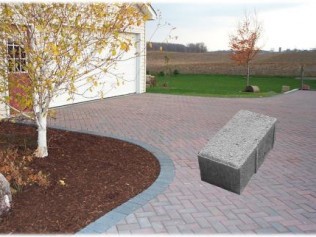
Size: 4" x 8" x 2 3/8" ( 60mm )
Colors: Burnt Red, Conestoga Buff Blend, Granite Blend, Walnut Blend.
This driveway is located in Marilla, NY.
Colors: Burnt Red, Conestoga Buff Blend, Granite Blend, Walnut Blend.
This driveway is located in Marilla, NY.
Stradford™
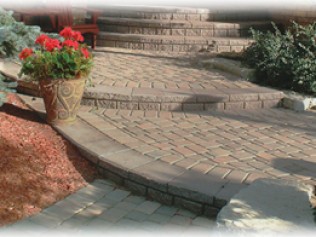
Stradford™
Size:Multiple sizes x 2 3/8" ( 60mm )
Colors: Granite Blend, Burnt Red, Riverbed Blend.
Size:Multiple sizes x 2 3/8" ( 60mm )
Colors: Granite Blend, Burnt Red, Riverbed Blend.
Roman Border™
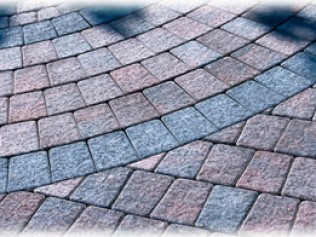
Roman Border™
Size: 7.24 x 4.69/5.35 x 2.36 in
Colors: Charcoal.
This paver is perfect for use as a solider coarse to frame your project.
Size: 7.24 x 4.69/5.35 x 2.36 in
Colors: Charcoal.
This paver is perfect for use as a solider coarse to frame your project.
English Cobble™
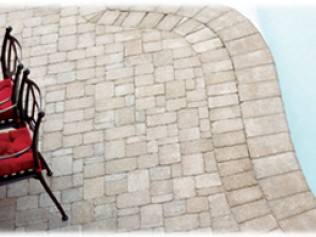
English Cobble™
Sizes: Mixed Bundle (Rectangle, Square and Small Rectangle combined)
Colors: Burnt Red, Conestoga Buff Blend, Granite Blend, Walnut Blend.
Sizes: Mixed Bundle (Rectangle, Square and Small Rectangle combined)
Colors: Burnt Red, Conestoga Buff Blend, Granite Blend, Walnut Blend.
Our Commitment
Any successful installation of paving brick starts with a solid understanding of the proper installation process. At Reboy Supply, we understand this and we work hard to help you with your project. From how - to advise to approved contractors we have the desire and knowledge to serve you.
Old Mill Cobble
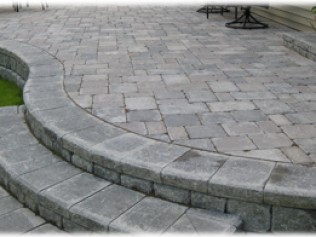
Old Mill Cobble
Sizes: Large Rectangle, Square and Rectangle.
Colors: Desert Grey Blend & Riverbed Blend.
Old Mill Cobble creates true random patterns with ease.
Sizes: Large Rectangle, Square and Rectangle.
Colors: Desert Grey Blend & Riverbed Blend.
Old Mill Cobble creates true random patterns with ease.
Paving Brick installation Process
PAVING BRICK BASICS
There are two types of installations; vehicle traffic and non-vehicle traffic. The installation process is very similar for both types. We will cover both in these instructions. You will first need to understand the materials and amounts needed before work can begin. Paving brick is installed in layers.
1) EXCAVATION
Before you put a shovel into the ground, you should check for underground utilities. You must excavate a minimum of 6 inches. Excavate 1 foot when possible, beyond the finished edge of your brick area on all sides that do not butt up against hard surfaces, such as; asphalt, concrete, or foundations. This is done to allow for the edge restraint to be installed later. When digging, do not dig deeper than necessary. Your goal is to leave the sub-base untouched. If you do disturb the sub-base, run a plate tamper over it before filling with the stone. Your excavation depth will depend on what type of paving brick project you are building. For non-vehicle surfaces, allow 4 inches for the stone base, 1 inch for the sand bed, 2 3/8 inches for your pavers that equals 7 3/8 inches deep. Your sand bed will compress about 1/4 to 5/16 inches after compaction so you will want to dig about 7 1/4 inches deep.
2) BASE INSTALLATION
Place the crusher run stone and compact in layers no more than 4 inches deep. The stone base is the layer that determines the contour and slope of the paving brick surface. You do not use the sand bed to determine the grade or slope. The sand bed and pavers will follow the contour that you create in the base. If your base stone surface has valleys and high spots, these will show up later in the brick surface. Allow 1/8 to 1/4 inch slope per foot for drainage. Make sure that you compact the stone base thoroughly, paying special attention to the outside edges. A poorly compacted base will allow the pavers to move and settle. Do not rush through the base installation. This is the foundation of your paving brick surface and the time spent here will reward you with a quality installation.
3) BEDDING SAND
The bedding sand gets screeded in a layer 1 inch deep. To achieve this, use two pipes that measure 1 inch in outside diameter. I like to use black iron pipe for this, it is rigid and inexpensive to buy at your local hardware store. Lay the two pipes parallel to each other and place bedding sand across them, then pull a straight 2 x 4 across the top of the pipes. You do not need to screed the whole paver area before placing bricks, you can screed in sections. It is best to keep the moisture in the sand by covering your sand pile with a tarp or plastic sheeting when it is delivered to you. If your sand dries out, you can spray it with a garden hose to remoisten it. The bedding sand will get compacted in the last step of installation. Do not walk on the sand bed. After you have screeded across the pipes, lift the pipes out of the sand bed and fill in the groove left by the pipes and smooth over with a cement trowel. Make sure to screed out beyond the finish edge of where the brick will end.
4) PLACING PAVING BRICKS
Stretch a mason line or snap a chalk line in the sand bed to start from. Place the pavers along this starting line in the pattern that you choose. Set the pavers on the sand, but don't hammer them into place. There should be a slight gap between the pavers. As you work, stay on top of the pavers, not on the sand. Every 2 or 3 feet, set a string line and check both line and alignment as you go. Use a rubber mallet or dead-blow hammer to adjust the alignment. When you can't place a paver because it needs to be cut, leave it out, only place full pavers for now. After placing all the pavers make the cuts and place them. Now inspect the entire surface for chipped or defective pavers and replace any that you find. Check your lines and adjust using your mallet or a large screw driver.
5) INSTALLING EDGE RESTRAINTS
Use a square point shovel or cement trowel to cut down along the outside edge of the pavers down to the stone base and pull away the excess sand away from the pavers. Being careful not to cut into the stone base. After you have removed the excess sand, place the edge restraint up against the pavers, right on top of the stone base. Drive the anchor pins in 1 foot apart for non-vehicle surfaces and 6 to 8 inches apart for vehicle traffic.
6) COMPACTING PAVERS & SANDING JOINTS
There are two methods to compacting and sanding that you can use. The first one is to spread dry joint sand over the surface and sweep in to fill the joints. Then run the plate compactor over the paver surface first in one direction then perpendicular to the first one. Run the plate tamper over the surface until you have filled the brick joints completely to the top. Wet sand will not vibrate into the joints so make sure the brick surface is dry before attempting to place sand. The other method is to run the plate tamper over the surface before sanding the joints. After running the plate tamper over the surface in two directions, sweep the joint sand into the joints. Run the plate tamper over the surface again. I like to use this method because it does a better job of leveling the brick surface and I also feel it does a better job of locking up the pavers. When you are done compacting, sweep off the excess sand, I like to leave a little sand on the surface to let Mother Nature work in any places that I have missed. You can also mist the surface with a light spray from your garden hose. The goal is to completely fill the sand joints to the top, this is important to the strength of the project and to keeping your brick joints weed free. After the first winter you will find the the sand joints have settled, all you have to do is sweep in more joint sand to fill them back up to the top.
7) CLEAN UP & FINAL INSPECTION
Inspect the surface for bricks that might have been chipped or cracked in the compacting step. If you find any, replace with good ones and re-sand. Back-fill over the edge restraint with soil or mulch. The last thing to do now is sit back and admire your work.
- Base Stone - is the layer that provides the strength and flatness of the paving brick surface. Spend lots of time on this layer, it will pay dividends later in the installation process. We recommend you use a stone product called 'Crusher run'. It is crushed limestone blended with decreasing sizes of limestone. This product has sharp angular edges that compacts well. The size of crusher run will depend on how much weight the surface is to bear. Most side walks and patios require 5/8 inch crusher run, also referred to as 'Driveway mix'. Driveways will require 2" Crusher run. Your excavation depths will depend on soil type and whether the paving brick project is for vehicle traffic or non-vehicle traffic. Assuming you have good sub-soil, projects for non-vehicle traffic will require between 4 to 6 inches of base stone for vehicle traffic, you will need between 8 to 15 inches of base stone. Again, there is a big variation of the depth of base stone because there are many factors that have to be examined to determine how much you will need.
- Bedding Sand - The sand performs two important functions. The first is that it provides a cushion for the paving brick. The second is that it holds the brick joint sand from washing out. This is the least expensive part of the whole installation and it causes so much trouble when the wrong sand or too much sand is used. It doesn't matter whether your project is for non-vehicle traffic or not, you will want to screed a uniform 1 inch layer of sand over the stone base. This layer does not get compacted until after the brick is placed over it. As mentioned before, the type of sand is very important. Do not use play sand, mason sand, or sand box sand. The sand must have the same properties as the stone base, sharp angular edges and decreasing smaller particle sizes. The top particle size is rather large, about 1/8 inch in diameter. The reason is that you want the sand base to compress uniformly across the entire surface area. The use of other sand material does not compress uniformly and will cause a wavy surface in time. The sand bed is the weakest layer in the whole installation and the deeper you go with sand the weaker that layer becomes. Edge restraints are designed for a sand depth of 1 inch.
- Paving Brick - This layer is pretty simple but there are a few things to mention about the brick layer. Standard pavers are ( 2 3/8" ) 60 mm thick. This is suitable for sidewalks, driveways, and light use parking lots. Most paving brick styles now have joint spacers on the sides. Place the brick tight together and it will leave a sand joint of about 1/16 inch.
- Edge Restraint - The use of a good commercial edge restraint is critical to a strong and long lasting paving brick project. The edge restraint gets installed around the perimeter of the brick area that does not butt up against a hard surface such as a driveway, sidewalk, or foundation. The job of the edge restraint is to keep the brick from moving laterally and having the brick joints spread apart. When this happens, the interlock fails and the whole surface area starts to fail. The edge restraint gets installed directly on the stone base. Pull away any excess bedding sand before installing the edge restraint. Drive in anchor pins a minimum of 1 foot apart to anchor the edge restraint. Remember, these commercial edge restraints are designed to be invisible, meaning you will back fill over them with top soil or mulch to hide it.
- Sand Joint - The kind of sand you use for the joints will determine how well you will create the lock-up and how much time and labor goes into filling the joints completely. Joints that are not completely filled not only are the cause of a weak lock-up but also the reason grass or weeds infiltrate the sand joints. Stores that sell paving brick also carry bagged dry joint sand. If the sand is wet, you can not work it into the joints and it takes much longer to fill all the joints.
Steps to Installing Pavers
Before you put a shovel into the ground, you should check for underground utilities. You must excavate a minimum of 6 inches. Excavate 1 foot when possible, beyond the finished edge of your brick area on all sides that do not butt up against hard surfaces, such as; asphalt, concrete, or foundations. This is done to allow for the edge restraint to be installed later. When digging, do not dig deeper than necessary. Your goal is to leave the sub-base untouched. If you do disturb the sub-base, run a plate tamper over it before filling with the stone. Your excavation depth will depend on what type of paving brick project you are building. For non-vehicle surfaces, allow 4 inches for the stone base, 1 inch for the sand bed, 2 3/8 inches for your pavers that equals 7 3/8 inches deep. Your sand bed will compress about 1/4 to 5/16 inches after compaction so you will want to dig about 7 1/4 inches deep.
2) BASE INSTALLATION
Place the crusher run stone and compact in layers no more than 4 inches deep. The stone base is the layer that determines the contour and slope of the paving brick surface. You do not use the sand bed to determine the grade or slope. The sand bed and pavers will follow the contour that you create in the base. If your base stone surface has valleys and high spots, these will show up later in the brick surface. Allow 1/8 to 1/4 inch slope per foot for drainage. Make sure that you compact the stone base thoroughly, paying special attention to the outside edges. A poorly compacted base will allow the pavers to move and settle. Do not rush through the base installation. This is the foundation of your paving brick surface and the time spent here will reward you with a quality installation.
3) BEDDING SAND
The bedding sand gets screeded in a layer 1 inch deep. To achieve this, use two pipes that measure 1 inch in outside diameter. I like to use black iron pipe for this, it is rigid and inexpensive to buy at your local hardware store. Lay the two pipes parallel to each other and place bedding sand across them, then pull a straight 2 x 4 across the top of the pipes. You do not need to screed the whole paver area before placing bricks, you can screed in sections. It is best to keep the moisture in the sand by covering your sand pile with a tarp or plastic sheeting when it is delivered to you. If your sand dries out, you can spray it with a garden hose to remoisten it. The bedding sand will get compacted in the last step of installation. Do not walk on the sand bed. After you have screeded across the pipes, lift the pipes out of the sand bed and fill in the groove left by the pipes and smooth over with a cement trowel. Make sure to screed out beyond the finish edge of where the brick will end.
4) PLACING PAVING BRICKS
Stretch a mason line or snap a chalk line in the sand bed to start from. Place the pavers along this starting line in the pattern that you choose. Set the pavers on the sand, but don't hammer them into place. There should be a slight gap between the pavers. As you work, stay on top of the pavers, not on the sand. Every 2 or 3 feet, set a string line and check both line and alignment as you go. Use a rubber mallet or dead-blow hammer to adjust the alignment. When you can't place a paver because it needs to be cut, leave it out, only place full pavers for now. After placing all the pavers make the cuts and place them. Now inspect the entire surface for chipped or defective pavers and replace any that you find. Check your lines and adjust using your mallet or a large screw driver.
5) INSTALLING EDGE RESTRAINTS
Use a square point shovel or cement trowel to cut down along the outside edge of the pavers down to the stone base and pull away the excess sand away from the pavers. Being careful not to cut into the stone base. After you have removed the excess sand, place the edge restraint up against the pavers, right on top of the stone base. Drive the anchor pins in 1 foot apart for non-vehicle surfaces and 6 to 8 inches apart for vehicle traffic.
6) COMPACTING PAVERS & SANDING JOINTS
There are two methods to compacting and sanding that you can use. The first one is to spread dry joint sand over the surface and sweep in to fill the joints. Then run the plate compactor over the paver surface first in one direction then perpendicular to the first one. Run the plate tamper over the surface until you have filled the brick joints completely to the top. Wet sand will not vibrate into the joints so make sure the brick surface is dry before attempting to place sand. The other method is to run the plate tamper over the surface before sanding the joints. After running the plate tamper over the surface in two directions, sweep the joint sand into the joints. Run the plate tamper over the surface again. I like to use this method because it does a better job of leveling the brick surface and I also feel it does a better job of locking up the pavers. When you are done compacting, sweep off the excess sand, I like to leave a little sand on the surface to let Mother Nature work in any places that I have missed. You can also mist the surface with a light spray from your garden hose. The goal is to completely fill the sand joints to the top, this is important to the strength of the project and to keeping your brick joints weed free. After the first winter you will find the the sand joints have settled, all you have to do is sweep in more joint sand to fill them back up to the top.
7) CLEAN UP & FINAL INSPECTION
Inspect the surface for bricks that might have been chipped or cracked in the compacting step. If you find any, replace with good ones and re-sand. Back-fill over the edge restraint with soil or mulch. The last thing to do now is sit back and admire your work.
